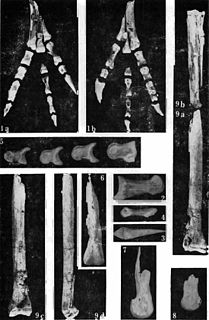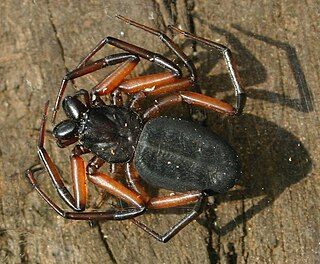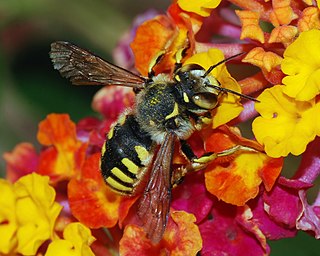Related Research Articles

The Social Democratic Party of Switzerland, also rendered as the Swiss Socialist Party, is a political party in Switzerland. The SP has had two representatives on the Swiss Federal Council since 1960 and received the second highest total number of votes in the 2019 Swiss federal election.

Karl Hermann Johannes Thiele was a German zoologist specialized in malacology. Thiele was born in Goldap, East Prussia. His Handbuch der systematischen Weichtierkunde is a standard work. From 1904 until his retirement in 1925 he was the curator of the malacological collection at the Museum für Naturkunde in Berlin. Thiele described more than 1.500 new species of molluscs; until today their types are deposited with the Museum of Natural History in Berlin. Especially important are his works on the Mollusca of the First German Antarctica Expedition and of the German Deep Sea Expedition aboard the vessel Valdivia.

Ypsolophidae is a family of moths with some 160 species. They are included in the Plutellidae by many authors.

Oswald Duda, full name Pavel Theodor Friedrich Oswald Duda was a German entomologist mainly interested in Diptera.

Borogovia is a troodontid theropod dinosaur genus which lived during the Late Cretaceous Period, in what is now Mongolia.
Zanclodon is an extinct genus of archosauriform found in Middle Triassic deposits in southern Germany.

Trochanteriidae is a family of spiders first described by Ferdinand Karsch in 1879 containing about 180 species in 21 genera. Most are endemic to Australia though Doliomalus and Trochanteria are from South America and Olin and Plator are from Asia. Platyoides species exist in southern and eastern Africa, Madagascar, and the Canary Islands with one species, P. walteri, introduced to Australia.

The Plutellidae are a family of moths commonly known as the diamondback moths, named after the diamondback moth of European origin. Some authors consider this family to be a subfamily of the Yponomeutidae, but it is usually considered to be a family in its own right, and have three subfamilies, Plutellinae, Praydinae, and Scythropiinae.

Anthidium is a genus of bees often called carder or potter bees, who use conifer resin, plant hairs, mud, or a mix of them to build nests. They are in the family Megachilidae which is cosmopolitan in distribution and made up of species that are mostly solitary bees with pollen-carrying scopa that are only located on the ventral surface of the abdomen. Other bee families have the pollen-carrying structures on the hind legs. Typically species of Anthidium feed their brood on pollen and nectar from plants. Anthidium florentinum bees are distinguished from most of its relatives by yellow or brick-red thoracic bands. They fly all summer and make the nests in holes in the ground, walls or trees, with hairs plucked from plants.

Anarosaurus is an extinct genus of pachypleurosaurs that lived in the Middle Triassic period (Anisian) and has been found in the Jena Formation and the Karlstadt Formation of Germany and the Winterswijk Quarry of The Netherlands. Two species are known: A. pumilio and A. heterodontus. The holotype of A. pumilio was originally housed at the Institut und Museum fur Geologie und Palaontologie, Georg-August-Universitat, Gottingen, but can no longer be located today because it was lost or destroyed during World War II.

Ocnerostoma friesei is a moth of the family Yponomeutidae. It is found in Europe and Japan. The species closely resembles Ocnerostoma piniariella.

Ypsolopha asperella is a moth of the family Ypsolophidae. It is found in Northern and Central Europe, Siberia, Korea, China, Asia Minor and Mideast Asia.

Prays is a genus of moths of the family Plutellidae.
Heinrich Friese was a German biologist and entomologist, specialist of bees (melittologist). Between 1883 and 1939 he described 1,989 new species and 564 new varieties or subspecies of insects, 99% of which were bees.
Ypsolopha colleaguella is a moth of the family Ypsolophidae. It is known from the Volga River valley in southern Russia and Kazakhstan.

Phrealcia is a genus of moths of the family Ypsolophidae.

Ypsolopha is a genus of moths of the family Ypsolophidae. It is the type genus of the family and comprises over 120 described species.

Ardeadactylus is an extinct genus of ctenochasmatoid pterosaur known from the Late Jurassic Solnhofen limestone of Bavaria, southern Germany. It contains a single species, Ardeadactylus longicollum, which was originally thought to be a species of Pterodactylus, as P. longicollum.
Phrealcia steueri is a species of moth of the family Ypsolophidae. It is found in Xinjiang, China.

Santa Juana Formation a Late Triassic sedimentary rock formation near Santa Juana in the lower course of the Biobío River in south-central Chile. Lithologies range from conglomerate sandstone, arkosic sandstone, siltstone and mudstone.
References
- ↑ Mey, W, 2012: Phrealcia steueri n. sp. und P. friesei n. sp. - zwei neue Arten einer disjunkt verbreiteten Gattung (Lepidoptera, Ypsolophidae). Entomologische Nachrichten und Berichte56:53- 57.
| Wikispecies has information related to Phrealcia friesei . |
| Wikimedia Commons has media related to Phrealcia friesei . |